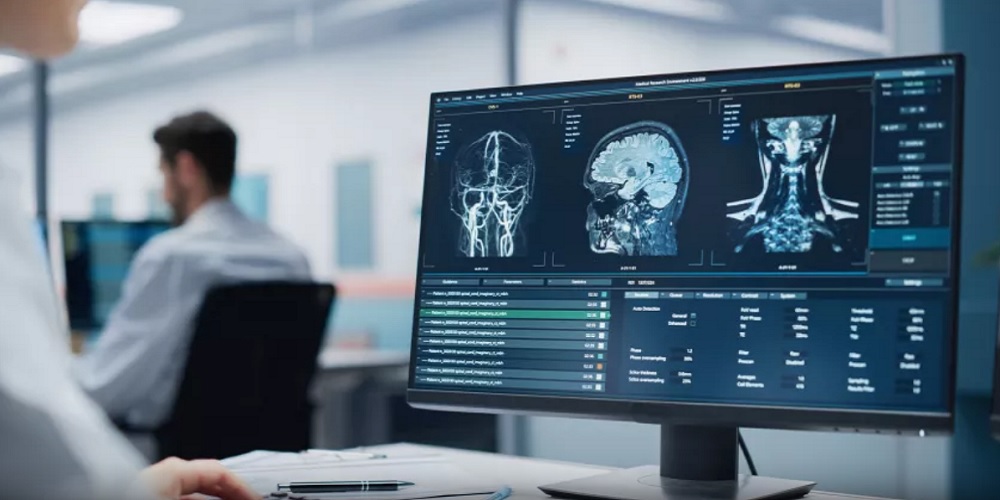Utilize Easy-to-Use Radiology Image Sharing Tech (Ditch the CDs)

In the past, CDs played a central role in the storage and dissemination of radiology images. The medical community was largely dependent on these physical media, a practice that while operational, was beset with obstacles related to storage, reach, and expenses. But as is characteristic of technology, transformation is constant. A migration toward more streamlined and economically viable options for handling and circulating these essential images is underway.
The emergence of cloud-based solutions has transformed radiology image sharing, presenting an integrated, safeguarded, and immediate means of retrieval and dissemination. The shift from CDs to these new systems mitigates the operational and economic strains tied to physical storage and enhances the caliber of healthcare, owing to the prompt, protected, and uncomplicated accessibility to patient images.
The clear benefits and cost savings are driving the rapid adoption of cloud-integrated radiology image sharing, marking a transformative phase in medical efficacy and patient service. In this article, we look at the benefits and cost savings that healthcare providers can achieve by transitioning from CDs to cloud-based radiology image sharing.
The Downside of Using CDs for Radiology Image Sharing
The traditional practice of using CDs for radiology image sharing has several inherent disadvantages that modern healthcare is eager to overcome. One of the most glaring issues lies in the cost implications. The direct costs are tangible: producing, storing, and transporting CDs incurs a significant financial burden on healthcare providers. Each CD must be burned, labeled, stored, and delivered, often in urgent scenarios.
This leads to the inefficiency intrinsic to CD use. In a world where immediacy can be the difference between life and death, the time-consuming process of manually handling and delivering vital information is a conspicuous hurdle. There's also the ever-present risk of damage or loss. Being physical objects, CDs are susceptible to various forms of wear and tear: scratches, exposure to unsuitable conditions, or even misplacement. Each scenario renders the critical information contained within inaccessible.
Their environmental impact is another often overlooked aspect. The production and disposal of CDs contribute to electronic waste, an issue that’s becoming increasingly prevalent and concerning. While CDs have served the medical community for years, the associated costs, inefficiency, and environmental impact underline the pressing need for a more sustainable, efficient, and cost-effective solution in radiology image sharing.
The Advantages of Cloud-Based Radiology Image Sharing Platforms
Cloud-based platforms offer healthcare professionals 24/7 access to radiology images, eliminating the barriers of distance and time. This “anytime, anywhere” access facilitates real-time collaboration among physicians and elevates the quality of patient care. Security is another cornerstone. These systems come with features that protect sensitive patient data and adhere to regulatory standards, offering peace of mind that privacy is maintained.
Financially, the move to the cloud has been marked by significant cost savings. The need for physical production, storage, and transportation of CDs has become a thing of the past. This reduction in operational expenses, paired with the quick and secure sharing of images, optimizes staff productivity, minimizes delays in treatment, and enhances patient outcomes. Cloud-based radiology image sharing is a holistic response to the challenges posed by traditional methods, ushering healthcare into an era where accessibility, security, and cost-efficiency are at the forefront.
Making the Shift to Digital Platforms
Taking the leap from traditional CD-based systems to digital radiology image sharing is a significant move, but it doesn’t come without its fair share of hurdles. Healthcare providers face the practical challenges of safely transferring sensitive patient data and ensuring that the new platforms meet regulatory standards. There’s also the human factor, as training staff and integrating new technologies into existing workflows can be daunting.
It’s not just about the technology; it’s about melding the old with the new, the human with the machine. Initial investments in technology and training can raise eyebrows, but here’s where strategic planning turns obstacles into stepping stones.
It starts with taking a good, hard look at your current operations, pinpointing potential stumbling blocks, and crafting a plan that’s as practical as it is effective. Staff training is more than a box to check off—it’s about empowering teams with the knowledge and tools to make the most of these digital platforms.
Novarad can help along this journey with resources crafted to make the transition less about overcoming hurdles and more about opening doors to enhanced efficiency and patient care. It’s a partnership focused on turning challenges into opportunities, ensuring that every healthcare provider can confidently tap into the expansive potential of digital radiology image sharing.
Final Thoughts
Transitioning to cloud-based platforms for radiology image sharing presents clear advantages. The benefits extend from operational efficiency and substantial cost reductions to a heightened standard of patient care. Healthcare providers should recognize the immense value of this shift, moving beyond the constraints of older CD-based systems.
Looking forward, we anticipate continuous advancements in radiology image sharing driven by innovation that will refine healthcare practices. Embracing cloud technology sets the stage for a future where collaboration, speed, and top-tier care shape the patient journey.
CryptoChart is changing the way that medical images are securely shared, without the hassles, limitations, and expenses of burning and sending CDs. In just seconds, you can create a secure access link to share with physicians and patients without logins or passwords to manage, while being in full HIPAA compliance. Get started for free with CryptoChart.
%20(3).png?width=1555&height=462&name=Novarad%20EHS%20Logo%20Full%20Color%20(1)%20(3).png)
